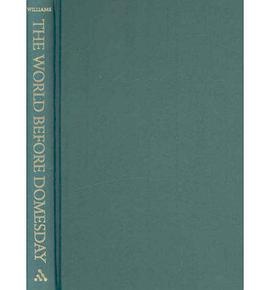

具体描述
This book presents the characteristic zero invariant theory of finite groups acting linearly on polynomial algebras. The author assumes basic knowledge of groups and rings, and introduces more advanced methods from commutative algebra along the way. The theory is illustrated by numerous examples and applications to physics, engineering, numerical analysis, combinatorics, coding theory, and graph theory. A wide selection of exercises and suggestions for further reading makes the book appropriate for an advanced undergraduate or first-year graduate level course.
作者简介
Mara D. Neusel: Texas Tech University, Lubbock, TX
目录信息
Title 2
Copyright 3
Contents 6
Introduction 10
Part 1. Recollections 16
Chapter 1. Linear Representations of Finite Groups 18
§1.1. Groups 18
§1.2. Homomorphisms of Groups 23
§1.3. Linear Representation of Groups 27
§1.4. Exercises 33
Chapter 2. Rings and Algebras 36
§2.1. Rings 36
§2.2. Homomorphisms of Rings, Algebras 40
§2.3. Ideals 42
§2.4. Exercises 49
Part 2. Introduction and Göbel's Bound 52
Chapter 3. Rings of Polynomial Invariants 54
§3.1. Linear Group Actions 54
§3.2. Rings of Invariants 62
S3.3. Exercises 69
Chapter 4. Permutation Representations 72
§4.1. Permutation Representations 72
§4.2. Newton, Waring, and Gauss 76
§4.3. Göbel's Bound 84
§4.4. Exercises 96
Application: Decay of a Spinless Particle 100
Application: Counting Weighted Graphs 104
Part 3. The First Fundamental Theorem of Invariant Theory and Noether's Bound 106
Chapter 5. Construction of Invariants 108
§5.1. Orbit Chern Classes 108
§5.2. The Transfer 112
§5.3. New Invariants from Old Ones 118
§5.4. Exercises 122
Chapter 6. Noether's Bound 126
§6.1. The Noether Map 126
§6.2. Polarizations 132
§6.3. The First Fundamental Theorem of Invariant Theory for Σ[sub(d)] 136
§6.4. Noether's Bound 139
§6.5. Exercises 144
Chapter 7. Some Families of Invariants 146
§7.1. Invariants of Representations of Cyclic Groups 146
§7.2. Pseudoreflection Groups 150
§7.3. Vector Invariants 157
§7.4. Exercises 160
Application: Production of Fibre Composites 164
Application: Gaussian Quadrature 168
Part 4. Noether's Theorems 168
Chapter 8. Modules 174
§8.1. Modules and Module Homomorphisms 174
§8.2. Operations on Modules 179
§8.3. Direct Sums, Free Modules, and Finite Generatedness 181
§8.4. Maschke's Theorem and Schur's Lemma 185
§8.5. Exercises 191
Chapter 9. Integral Dependence and the Krull Relations 194
§9.1. Integral Dependence 194
§9.2. Integral Extensions 199
§9.3. The Krull Relations 202
§9.4. Exercises 207
Chapter 10. Noether's Theorems 210
§10.1. Finite Generatedness 210
§10.2. The Krull Dimension 217
§10.3. Examples 221
§10.4. Exercises 226
Application: Self-Dual Codes 228
Part 5. Advanced Counting Methods and the Shephard-Todd-Chevalley Theorem 232
Chapter 11. Poincaré Series 234
§11.1. Poincaré Series 234
§11.2. Molien's Theorem 242
§11.3. Exercises 251
Chapter 12. Systems of Parameters 254
§12.1. System of Parameters 254
§12.2. Hilbert's Nullstellensatz 258
§12.3. Primary and Secondary Generators 261
§12.4. Dade's Basis 267
§12.5. The Degree Theorem 270
§12.6. Exercises 274
Chapter 13. Pseudoreflection Representations 276
§13.1. Pseudoreflections 276
§13.2. The Shephard-Todd-Chevalley Theorem, Part I 279
§13.3. The Shephard-Todd-Chevalley Theorem, Part II 284
§13.4. Exercises 290
Application: Counting Partitions 292
Appendix A. Rational Invariants 296
§A.1. Algebraic Field Extensions 296
§A.2. Splitting Fields and Normal Extensions 302
§A.3. Galois Extensions 304
§A.4. Examples 307
§A.5. Exercises 311
Suggestions for Further Reading 312
Notation Index 314
Subject Index 316
A 316
B 316
C 316
D 317
E 317
F 318
G 318
H 319
I 319
J 319
K 319
L 320
M 320
N 320
O 321
P 321
Q 321
R 321
S 323
T 323
U 323
V 323
W 323
X 323
Y 323
Z 323
Back Cover 326
· · · · · · (收起)
读后感
评分
评分
评分
评分
用户评价
相关图书
本站所有内容均为互联网搜索引擎提供的公开搜索信息,本站不存储任何数据与内容,任何内容与数据均与本站无关,如有需要请联系相关搜索引擎包括但不限于百度,google,bing,sogou 等
© 2025 book.wenda123.org All Rights Reserved. 图书目录大全 版权所有




















